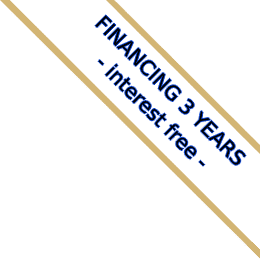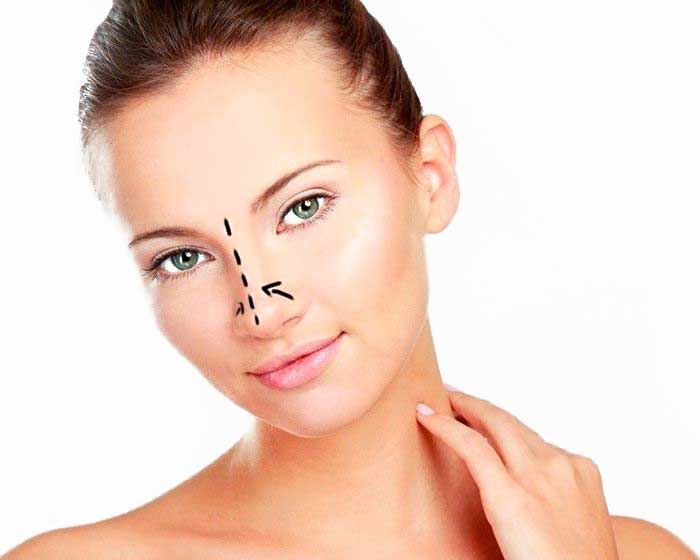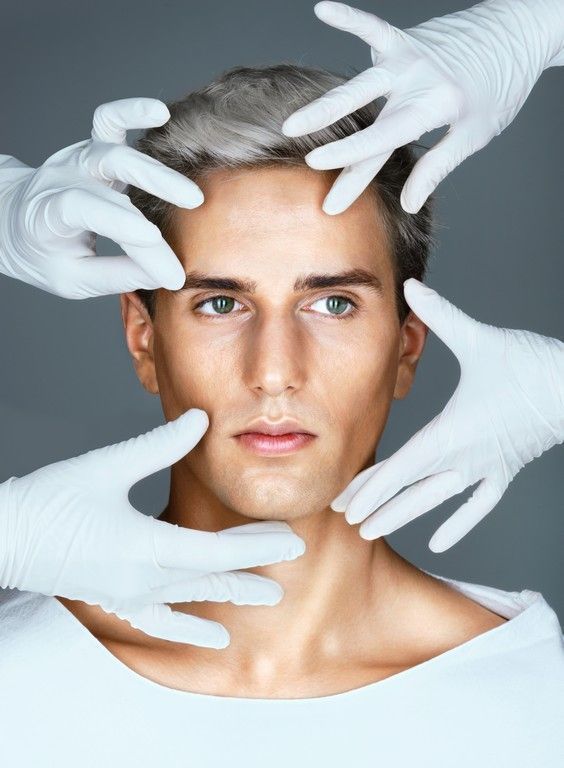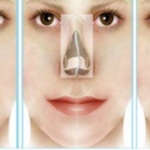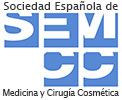Septoplasty Operation - deviated nasal septum
English subtitled video
Septoplasty is an operation to fix breathing problems caused by a deviated nasal septum. The nasal septum is an unseen cartilage in the middle of the nose, between the two nostrils.
This procedure achieves two results, better breathing and fixing the deviation of the nose to improve the aesthetic appearance.
Clínica Sanza in Barcelona, is a reference center in the treatment of nasal septum plasty.

Book a visit
You can do it in 3 ways:
– Free on-site visit: Call +34 932066540 from Monday to Thursday from 9:00 am to 6:00 pm and Friday from 9:00 am to 3:00 pm.
– Free on-site visit with IMMEDIATE booking: For booking outside office hours. We charge 60 € on your card to avoid false bookings. It is refunded on the day you come to the consultation.
– ONLINE Visit: Video conference using whatsapp or Zoom. Cost of 60 € non-refundable. When booking indicate in the comments that you want videoconferencing and not on-site.

Book a visit
You can do it in 3 ways:
– Free on-site visit: Call +34 932066540 from Monday to Thursday from 9:00 am to 6:00 pm and Friday from 9:00 am to 3:00 pm.
– Free on-site visit with IMMEDIATE booking: For booking outside office hours. We charge 60 € on your card to avoid false bookings. It is refunded on the day you come to the consultation.
– ONLINE Visit: Video conference using whatsapp or Zoom. Cost of 60 € non-refundable. When booking indicate in the comments that you want videoconferencing and not on-site.
WHERE DO WE OPERATE?
At Clínica Sanza we rely on the Sagrat Cor Hospital, part of the Quirónsalud group, to perform our surgical procedures.
Its prestige, facilities, medical and healthcare staff, as well as its technology are a guarantee.
BARCELONA: A HEALTH HUB
Do you want to know why it is worth coming to Barcelona for plastic surgery and why so many people come from abroad?
WE ORGANIZE EVERYTHING FOR YOU
Your trip, your flight, your operation, your transfer and your hotel with our support agency. We work with the best travel agencies worldwide.
PATIENT PROFILE
People who present both respiratory dysfunctions and aesthetic alterations of the nose.
PROCEDURE
It is performed in patients, basically athletes or with congenital malformations, who have suffered a nasal blow with deviation or bony callus that makes breathing difficult.
DURATION OF THE INTERVENTION
- 2 to 3 hours
PROTOCOL
Preoperative
- Evaluation of the area to determine the adequacy of the treatment.
- Follow specific guidelines determined by the doctor
- CBC and tests on cardiac and respiratory status
Anesthesia
- Local and sedation, or general
Hospitalization
- Ambulatory or 24 h admission
Postoperative
- Nasal packing and protective splint
- Removal of the tamponade within 24 h and 48 h
- Removal of the splint after 7 to 10 days
- Discomfort from packing and splinting, usually painless.
- Medication if required
- Mandatory check-ups after a few days, a few weeks and a few months, according to prescription
Convalescence
- 5 to 10 days
- Be careful not to receive shocks in the treated area.
RESULTS
- Aesthetic change evident from the very first moment
- Definitive appearance from the first to the third month after surgery
- Rejuvenated appearance
- Improvement of the patient’s psychological profile and self-esteem.
DEGREE OF DIFFICULTY
- Simple-medium intervention
LEVEL OF RISK
- Under
- Risks inherent to the operation: callus or bone sequestration requiring touch-up
- Risks of any operation: bleeding, infection, impaired healing
BEFORE/AFTER PHOTOS
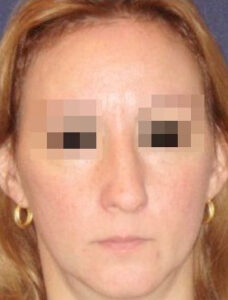
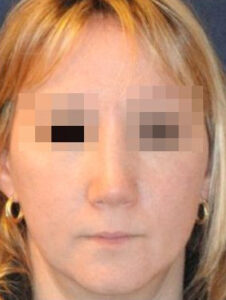
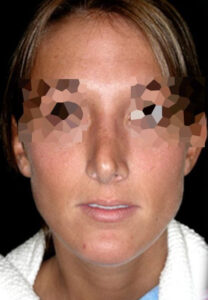
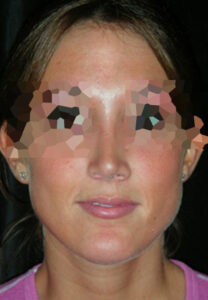
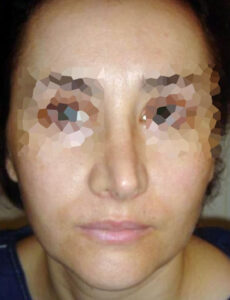
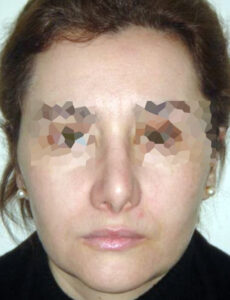
Whatever your case may be, do not hesitate to contact us.
Sanza Clinic in Barcelona, quality of service
Frequently asked questions about nose surgery (rhinoplasty)
When will I see a definitive result after a Rhinoplasty?
There are many factors that influence, the type of surgery, the patient’s own characteristics, previous interventions, etc. In general, approximate results can be seen in 15 to 21 days, but usually it is not until the third month that the result is more or less definitive. However, the nose may undergo minor changes for up to a year.
At what age can I have a Rhinoplasty?
It is not advisable to operate on any patient until the natural growth process is complete. In girls this usually occurs at 14 or 15 years of age, in boys it is usually up to 18 years of age, so in general terms we do not advise this type of intervention until after adolescence.
Can nose deviation and shortness of breath be corrected in the same surgery?
Yes. It is very common to see patients who breathe poorly because they have some degree of septal deviation that affects the correct flow of air into the nose. By correcting this deviation or obstruction we improve the appearance and restore respiratory function. That is to say, we correct the esthetic and functional part.
What type of anesthesia is used in Rhinoplasty?
It depends on the type of repair we have to perform. If only the tip (cartilage) needs to be corrected, it can be performed under local anesthesia and a little sedation. In cases in which we have to perform setum corrections or osteotomies it is indispensable to perform it under general anesthesia.
Should I stay in the hospital after a Rhinoplasty?
The intervention itself does not require hospitalization, but we must differentiate whether we do a simple rhinoplasty (cartilage) or complete (bone + cartilage). In the first case it is ambulatory and in the second case it may be necessary to spend 24 hours of hospitalization, more for the residual effects of anesthesia than for the Rhinoplasty as a procedure.
Do I have to wear nose plugs?
Nasal packing is not always necessary, only when a modification of the nasal septum is performed. If these are required, they will be removed the day after surgery or if bleeding occurs within 48 hours.
Do I have to wear a cast or splint after rhinoplasty?
Not all nose operations require the use of plaster or splint, only in cases of osteotomies they must be used for an average of one week, in other cases it is possible to use or not a support splint for one to 5 days, depending on the inflammation.
What tests do I need before performing a Rhinoplasty?
In case of a simple procedure under local anesthesia only a complete blood test is required, in case of more complex procedures under sedation or general anesthesia we will add a chest x-ray and an electrocardiogram.
How long does the procedure take and what is it like?
Approximately 1 to 2 hours. Aesthetic rhinoplasty consists of modifying the shape of the nose through small incisions or openings made inside the nose, or at the base of it in such a way that there is no external scar or it is practically imperceptible.
When will I be able to return to work?
It depends on the surgery and the type of activity you perform. In cases that do not involve major physical exercise, the patient can return to normal work after 3 days, but it should be noted that by this time there may still be swelling and some bruising in the area of the nose and eyelids. Usually after 7-10 days there are no stigmata of the intervention and after a month you can do intense physical exercise and sports.
Does it hurt a lot?
There is a legend that rhinoplasty, both simple and complete, is very painful but this is not true. It does not hurt at all. Only if you touch it is sore, otherwise you do not need to take any painkillers.
If I don't like it, can I rectify it?
Yes, of course. It must be to the patient’s liking. But it cannot be retouched until at least 6 months after the previous operation.
Is it always the same nose job shape?
Of course not. Many years ago they were made very much the same, but for years you have been able to choose the shape you want it to have.


